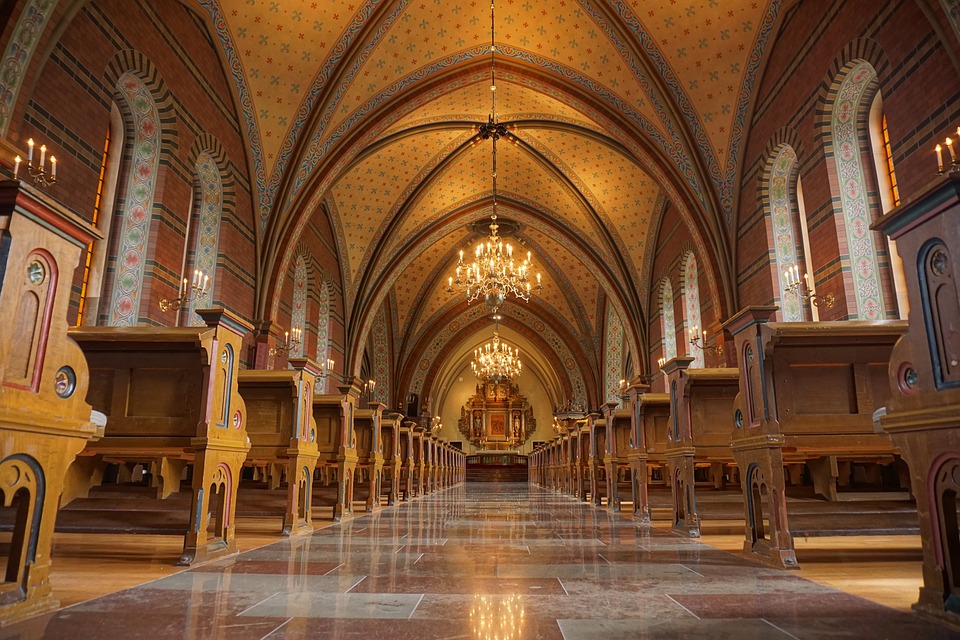Worship styles have changed significantly during the past 20 years. Historically, in the Christian faith, there was a clear distinction in the musical styles of worship among different denominations. Generally speaking, Catholic worship was liturgical and reflective, and it might or might not have used instruments to accompany the experience. Baptists used hymnals, and they relied upon piano and organ to accompany the choir and congregational singing. Evangelicals and Charismatics embraced whatever the most current music style was, but they used drums, guitars, basses, keyboards and worship teams.
Today, every dynamic house of worship (HoW) in the Christian faith has changed its worship style at least a little bit. Some HoWs have completely moved away from their historical roots and come to embrace popular musical styles that seem to be attracting larger numbers of people, who attend so they can engage in a newer kind of worship experience.
The contemporary worship styles created by popular movements, such as Bethel, Hillsong, Saddleback, Vineyard and Willow Creek, are being emulated around the world in nearly all dynamic HoWs, across all denominations. This contemporary style is altering the way that many people worship, and it’s altering many worship spaces in which we worship. Today, choirs have been traded for worship teams; baby grand pianos and organs have been traded for electronic keyboards, drums and guitars.
The HoWs that still have a choir have become very electric, by which I mean they use a large scope of musical instruments, sound-reinforcement equipment and video gear to capture and display images that work together to create a worship experience that is highly mediated. In short, no matter the denomination (Baptist, Catholic, Church of God, Methodist, etc.), it’s more than likely that the style of worship has changed and the music demands more significant utilization of communication technologies. That also means demand for a pool of trained operators has grown.
The newer popular music styles are also placing new demands on worship spaces. We have found that many older, traditional worship spaces were not built in ways that easily enable the adoption and use of new gear, such as line arrays, large video screens and theatrical lighting. Thus, pastors and leaders are searching for ways to adapt their traditional worship spaces so that lights, sound equipment and video systems can be installed and used to create a richer worship experience.
When the goal is to add the new gear without major renovations, the job is much more challenging—but I love it. I have seen new installations that, in my opinion, were done in a way that tainted a once-beautiful traditional worship space. I believe we should be very deliberate as we add modern gear to structures that are beautiful and often historical.
I love the stained glass, real wood and marble often found in traditional worship spaces. Our goal should be to treat the acoustics, and then install high-quality sound-reinforcement equipment, theatrical lights, video projectors and video screens in these ornate worship spaces in a way that blends into the architecture, without ugly cables being in view.
To be clear, I have no problem changing out old red or orange carpeting to create a more updated look. But we should work hard to install the new gear so that it updates the worship space—gives it fresh face—while also maintaining the traditional, and often classical and classy, look of the setting.
On the other hand, I am sure that you have been asked to work in worship spaces that were once beautiful, but that are now tired and worn. In those cases, the leadership is very aware that they must update the worship space, or they risk losing congregants to churches that have beautiful—or, at least, functional—and highly mediated worship spaces. In worship spaces of this type, if money is available, then, more than likely, the installation can be a bit easier because there is an opportunity to help the pastor and leadership renovate the worship space in ways that make it acoustically stable and that enable a nice, clean installation.
I recognize that there is a roaring theological and philosophical debate as regards new musical styles and the ways (good and bad) that it is impacting the worship space and our faith. I certainly hope that worshipping God, regardless of the use of technology, remains the focus of all people of faith. Regardless of where you stand in that debate, however, I believe the shift in musical styles and the need to update worship spaces have affected our industry in very positive ways. In fact, I believe these trends explain why the HoW market is one of the largest purchasing sectors of new technology in the US.
That is what I believe. Please tell me what you believe.
